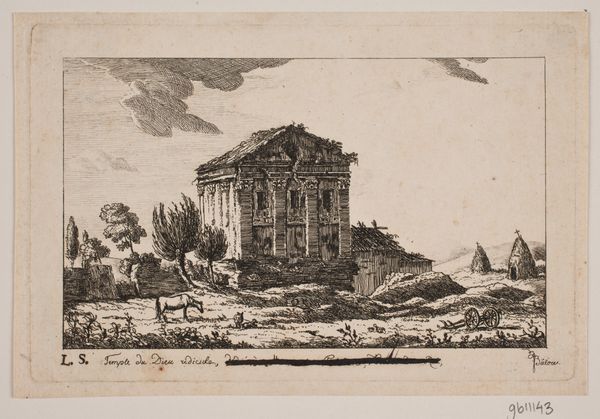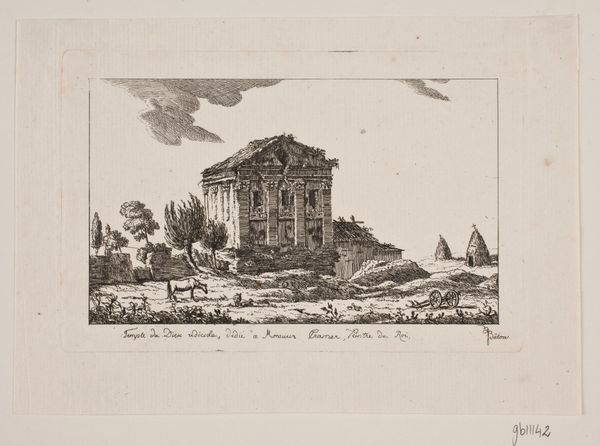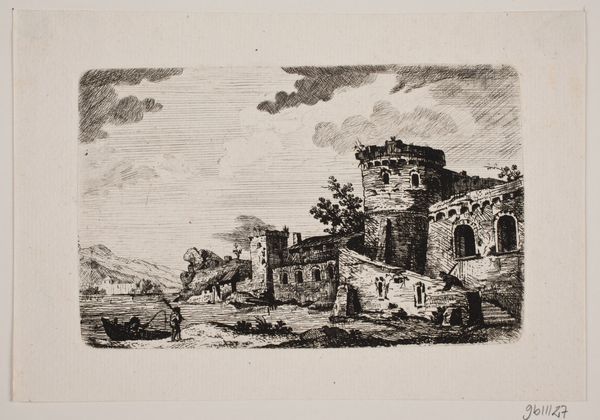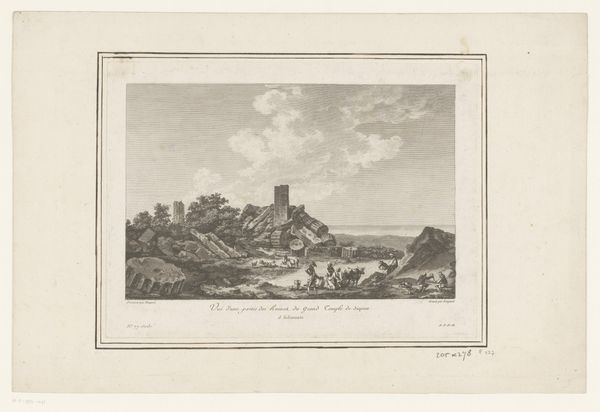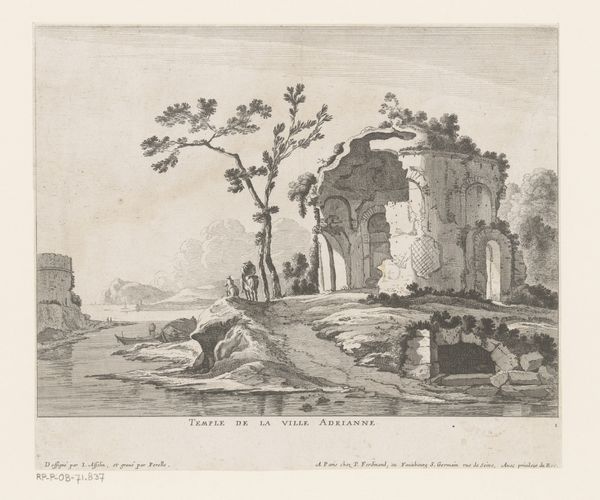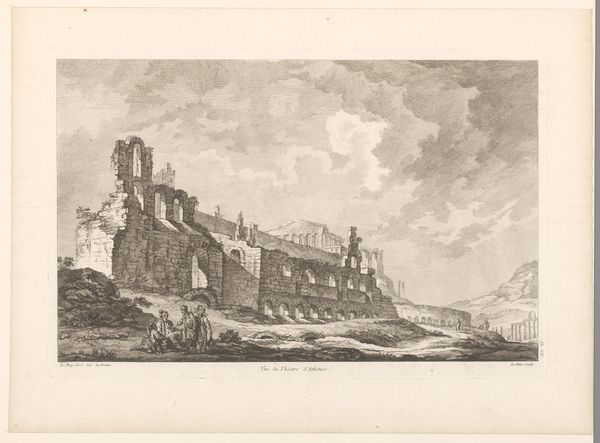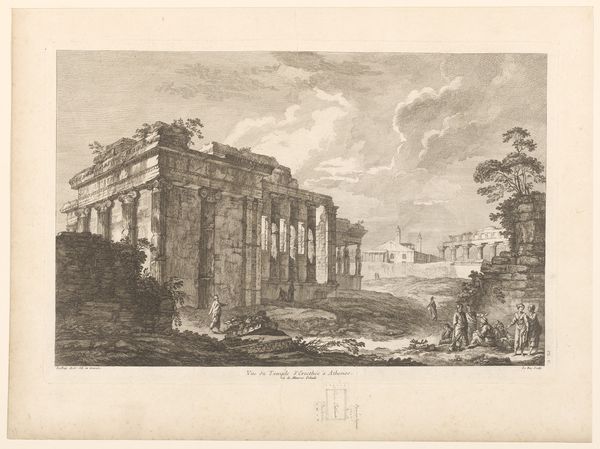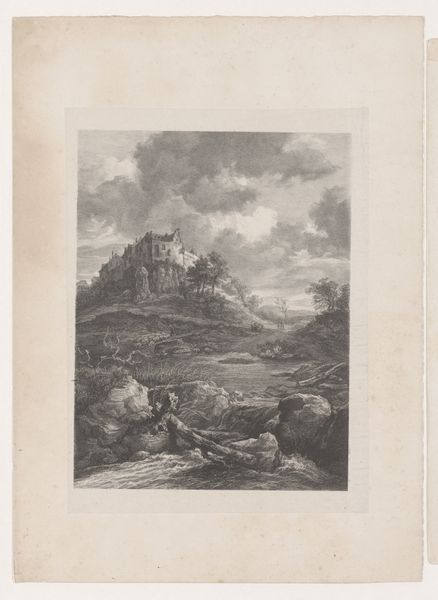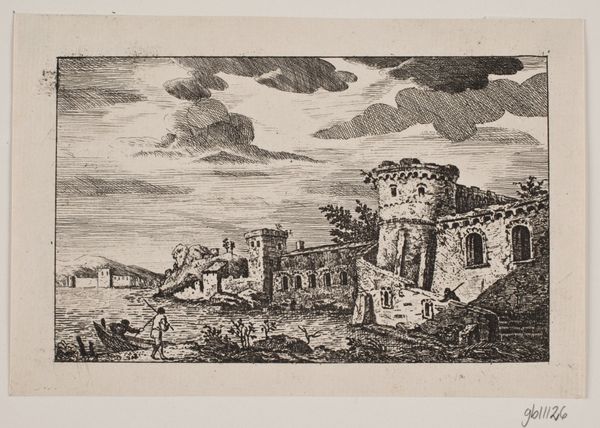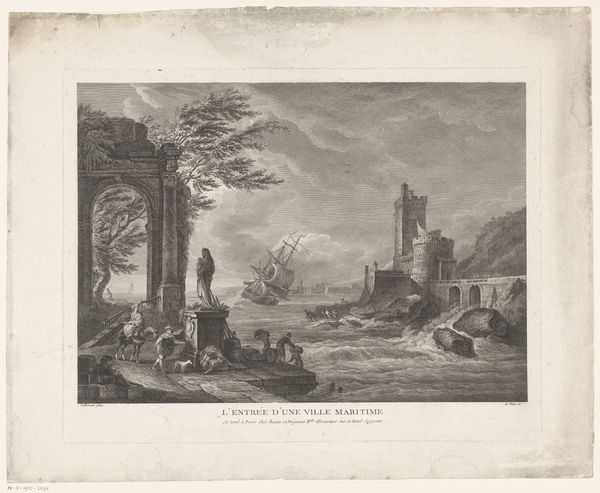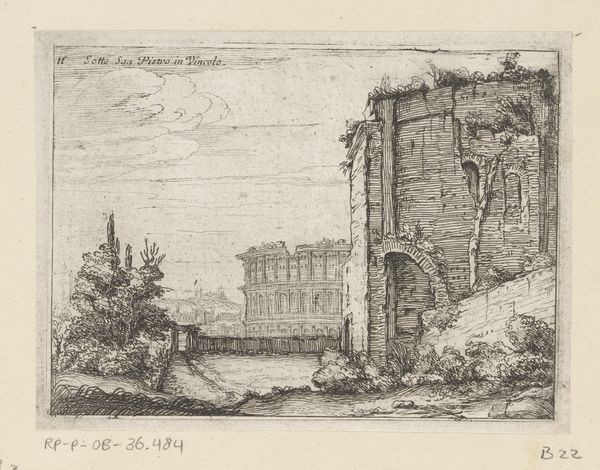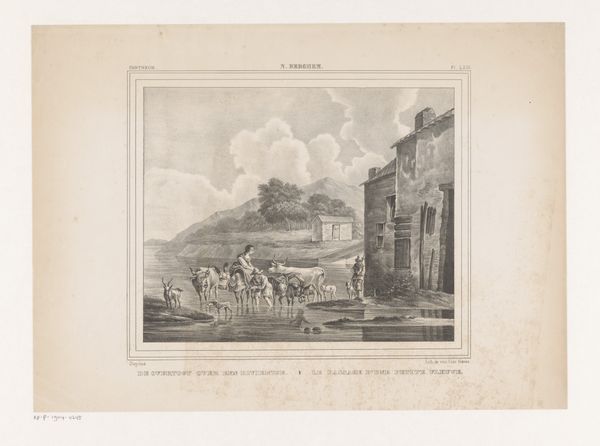
print, engraving, architecture
#
neoclacissism
# print
#
landscape
#
classical-realism
#
form
#
line
#
cityscape
#
engraving
#
architecture
#
realism
Dimensions: height 304 mm, width 462 mm
Copyright: Rijks Museum: Open Domain
Curator: This print, "Gezicht op het Monument van Thrasyllos," or "View of the Monument of Thrasyllos," comes to us from Jacques Philippe Le Bas, dating back to 1758. Editor: It has an ethereal quality, almost dreamlike. The monument itself is striking against the rocky landscape, yet there's a definite sense of decay and abandonment. Curator: Le Bas worked primarily as an engraver, reproducing the works of other artists. Here, we see his mastery of line and texture, characteristic of the Neoclassical movement, to create an image focusing on a physical location. Note the medium – engraving on paper -- that offers a detailed rendering of stone and sky. The way it shows architecture tells stories. Editor: Absolutely, and the monument's symbolic weight is undeniable. The dedication to Thrasyllos, who sponsored dramatic productions, speaks volumes about Athenian society's reverence for theater and spectacle, doesn't it? Curator: Certainly. Also think about the role this image itself plays. As a print, it becomes a commodity, circulated and consumed, extending the monument's influence beyond its physical location. It transformed into a consumer item that people can view and see a Neoclassical depiction of Greek architecture. Editor: I’m drawn to how Le Bas positions the figures in the foreground, seemingly dwarfed by the monument, almost lost in contemplation. To me, they invite reflection on time, memory, and the impermanence of human achievements. What this monument represents carries a great amount of symbolism, in what feels almost religious to ancient greek tradition. Curator: Agreed. And in that connection, it speaks to a cultural memory deeply embedded in the West, specifically in its intellectual elites at the time. The method of the print becomes more than the physical art. Editor: Considering that, it leaves me thinking about the human urge to memorialize. This print, like the monument itself, is an act of preserving a cultural identity, a story for future generations, crafted in physical form and artistic skill. Curator: Yes, and perhaps the very act of creating and then distributing this print, and through distribution, transforms it to create an interesting exchange. Thank you, that was really an insight.
Comments
No comments
Be the first to comment and join the conversation on the ultimate creative platform.

